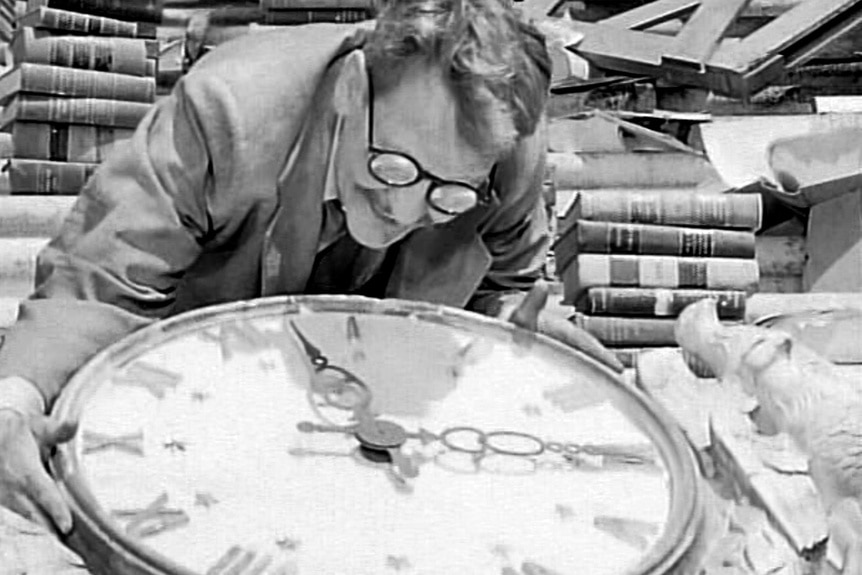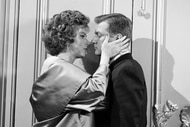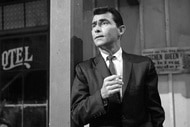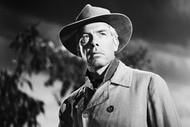How the Twilight Zone Created A Nuclear Apocalypse for "Time Enough at Last"
One of The Twilight Zone's most famous episodes made use of some clever set design.
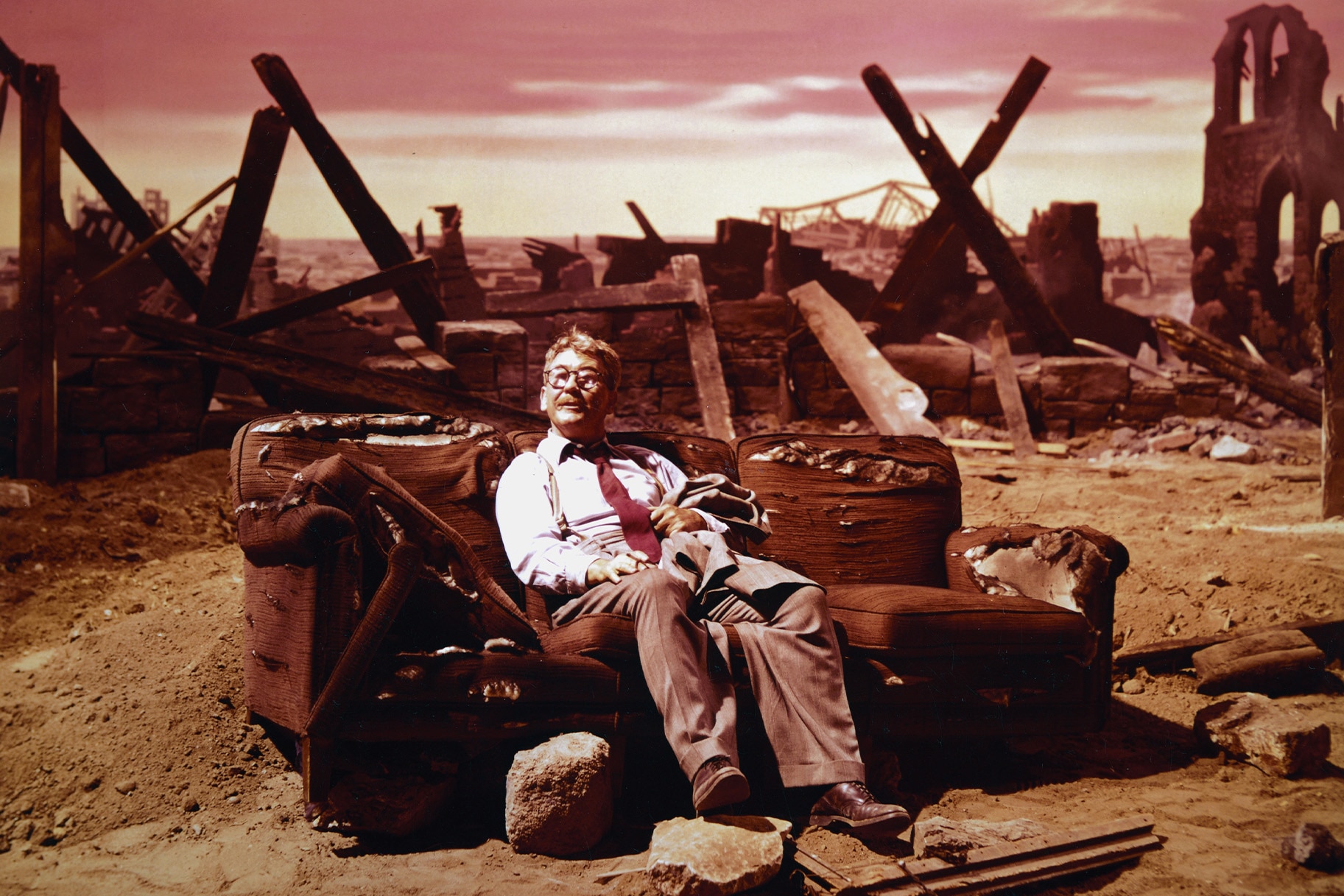
In the storied history of The Twilight Zone, there are some moments so enduring that even people who've never seen a complete episode of the series can recognize them. These include the gremlin on the side of the plane in "Nightmare at 30,000 Feet," the pig-faced surgeons of "Eye of the Beholder," and of course, the tragic twist ending of "Time Enough at Last."
The eighth episode of the series, adapted by creator Rod Serling from a short story by Lynn Venable, tells the story of a bookish man (Burgess Meredith) who finds himself seemingly the only survivor of a nuclear blast. Shocked by his circumstance, he is nevertheless delighted to find a library full of intact books, and celebrates that he'll finally be able to read all the classics completely unbothered by other humans. Of course, he needs his glasses to read, and the episode ends with his glasses falling to the ground and breaking, leaving him to spend the rest of his life with his ultimate dream just out of reach.
Want more on The Twilight Zone?
How One Writer's Real-Life Fears Inspired an Early Twilight Zone Episode
The 10 Most WTF Twilight Zone Twist Endings
The Classic Twilight Zone Episode That Inspired Jordan Peele's Us
Inside the world of The Twilight Zone's "Time Enough at Last"
It's one of the most famous, if not the most famous, twist endings in all of Twilight Zone history, and it depended not just on Meredith's performance and Serling's writing, but on the crew's ability to deliver a believable nuclear disaster. According to The Twilight Zone Companion by Marc Scott Zicree, that began with a desire to keep things intimate and focused on the experience of Henry Bemis (Meredith), who slips into a bank vault to eat his lunch one day.
That vault is, of course, where the nuclear horror begins. The location means that Bemis is protected from the blast, but still feels the powerful impact rocketing through the bank. To make that work, The Twilight Zone team built the vault set on springs, so when you see it shake, that's because it actually was shaking Meredith around to simulate a nuclear blast.
Then, of course, there came the damage. Wandering outside, Bemis finds pretty much the whole city in ruins. That effect, according to cinematographer George T. Clemens, was achieved by building a set full of ruins on a soundstage, then backing it with a massive matte painting of a cloudy sky (recycled from a film production). To make things look more foreboding, Clemens put a blue filter on the camera lens which added a more sinister layer to the clouds.
The whole episode culminates on a set of massive stairs that once led to the library whose books Bemis discovers. It's on these steps that he celebrates his discovery, prepares to embark on the greatest reading journey of his life, and finally meets with tragedy. That set was a pre-existing location on the MGM lot that was used for a variety of film and TV productions, including The Time Machine and even another Twilight Zone episode, fellow Season 1 entry "A Nice Place to Visit." The stairs were director John Brahm's idea, as a way to emphasize just how alone Bemis really was.
"I had the idea to put him there, all by himself, after this end of the world, so to speak," Brahm recalled. "In other words, the emptiness was shown. Everything was gone."
Careful set design, a great central performance, and a twist ending for the ages all made for a classic Twilight Zone episode that we're still talking about today. Now, the next time you watch "Time Enough at Last," you'll be armed with a little extra trivia to go with the iconic visuals.
The Twilight Zone airs regularly on SYFY. Check the schedule for more details.
